TIME ELAPSED SINCE DEPARTURE : 23 WEEKS
DISTANCE TRAVELLED : 10,200 KMS
GETTING THERE
Getting onboard the Spirit of Tasmania for a daytime crossing is a process and it means an early start. The ship sails at 8.30 am, but you have to be there no later than 7.30 and the number of vehicles of all kinds that are queueing is astounding. Cars, campers, motor bikes, caravans – you name it. I am guessing that there were at least 20 vehicles with caravans.
I managed to take out an emergency light that was attached to the side of the check-in person’s booth with the side of our caravan. The light was destroyed and there is a ding on the side of the van but no major damage seems evident. Doh!
There are 5 levels of vehicles and another 5 levels for passengers on the ship, mostly in big, quite comfortable open lounge type settings. (Sooz: The Spirit of Tasmania is a HUGE ferry – more like a small cruise ship. There are cabins for sleeping, comfortable seating, restaurants and bars, multiple games rooms, movie theatres, etc. The crossing takes approximately 10 hours.)
Once on board, we hung out on one of the outside decks while we sailed out of Port Phillip Bay, through the heads and into Bass Strait. That took two hours and the vessel gets along at 20 knots. After a while we headed to our allocated seats when the main surprise of the voyage occurred. Who should we see but Alison Trapnell who was on board with husband Matt on their way to the Apple Isle for a trek. That meant spending the rest of the crossing on a rear deck with them, drinking wine & beers. Great to see them! But that was not the only small- world story. Also on board was a family we had spoken to a week earlier on the beach at Rosebud, and another couple who were camped next to us in the caravan park in Geelong!!
We learned a good lesson when we arrived at the caravan park following the Bass Strait crossing. We had no power in the van even though mains electricity was connected. Reason: we had left the fridge in the van on during the 10 hour crossing that had flattened the two on-board batteries. The van is designed so that many electrical components are channelled through the batteries, and those components will not function until the batteries are fully charged. So we had an anxious 2 – 3 hours in failing daylight but in the end the batteries re-charged and all was OK.
STANLEY
Our first main stop was the sensationally quaint fishing village of Stanley on the North-West corner of Tassie. What a great little place. There are only a few hundred residents but there are remarkable number of beautifully maintained old cottages with vibrant gardens and a bunch of historic buildings in wood or stone (Sooz: If you did not know where you had travelled to, and open ed your eyes here, you would swear you were in a village in Great Brittan somewhere.) The town is all nestled at the foot of an ancient volcanic plug they call ‘The Nut’. Walking to the top of The Nut is only a 500 metre trail but I can testify that it is without question the steepest path I have ever scaled. Spending 5 days here gave us the opportunity to have a look around as is the normal practise. However, on this occasion, after seeing a section of the West Coast down to the town of Temma and noticing holiday shacks thinly scattered along the way, one can only be shocked at where some people choose to live and/or holiday! Talk about wind-blown, rugged, bleak and cold! Interestingly, in these isolated parts there is a coastal lookout called ‘The Edge of the World’ which is not particularly high or spectacular, but you are looking due west across a wild ocean and directly into the eye watering & relentless roaring forties, where, if you decided to take a long-distance swim, the next bit of land you would get to is called Argentina! (Sooz: The area is known as the Tarkine Wilderness. The Tarkine is the second largest temperate rainforest in the world; home to over 60 species of rare, threatened and endangered species; and the Tassie Devil lives here. No – we did not spot any.)
Along this coastal area is vegetation that can only be compared to Artic tundra, in that it is low-to-the-ground, super-thick scrub. If you hit a dozen golf balls 20 metres into it you would not find any of them. However, 5km inland the ‘tundra’ suddenly finishes and traditional tall-tree forest starts that is very dense.
The caravan park is situated right by the beach with only a line of scrub and a rock wall between us and the water. Each evening there was the spectacle of fairy penguins waddling ashore and we heard them during the night from their burrows around us. (Sooz: I never tired of these guys. They are very shy but so sweet.)
We watched some guys catch about half a dozen squid from the local jetty one afternoon. The next day, we joined our neighbours who were a lovely family on the jetty to get our share and of course none of us caught a thing. Didn’t matter – we had a good time.
Had a nice dinner at the local seafood restaurant for my birthday (4th January, in case you were wondering 😊).
We both really liked Stanley.
STRAHAN
Strahan is about half way down the rugged west coast and getting there from Stanley requires tackling a very hilly and winding road. It took about 3.5 hours and when you consider Tassie to be the size of a handkerchief, you don’t expect such travel times. It’s simple a product of the terrain (see my comment about driving in Tassie in the ‘OBSERVATIONS’ section of this blog).
Strahan is small & remote. Set on a harbour that you are proudly told is 6 times larger than Sydney Harbour, there is plenty of water to use but even in the height of summer there are not a lot of water based activities happening. Probably because for 80% of the year its blowing a gale and for 70% of the year its bloody cold. We had a lovely run of weather where we actually went swimming one warm day and the water was not that cold – perhaps 18 or 19 degrees. I was stunned. Spent another day fishing and exploring around Macquarie Harbour Heads where Aust salmon were on the bite and the ocean beaches around the corner were nice to walk on.
A tiny hamlet called Corrina is an hours drive away on the Pieman river where Huon Pine was heavily logged in the 1800 & early 1900’s ’s and the Tasmanian Tiger last roamed. The Tasmania Tiger story is a tragedy. The govt of the day put a bounty on its head under the belief that sheep and poultry were being preyed upon, and the creature was thus shot out of existence. At the local pub, there are a number of dedications to the animal, including an old ‘Honour-board’ that listed names of who shot Tigers in the area and how many they killed. It was grim viewing and the ‘winner’ was a bloke called Pearce who had 18 kills to his name. We have all heard stories that there have been sightings here & there and when you see the environment where they lived, you might think it possible. Goodness, the Wilderness area covers more than 15,800 square kms or about 4 million acres and there are only 2 roads in or out! This southwest region is so very remote, so rugged, so large, so sparsely populated and so inhospitable that perhaps, maybe, possibly, hopefully there are some Tigers hidden away in there doing their thing. Fingers crossed.
We completed a cruisy 2-hour cruise along the Pieman river onboard a historical 90 year old Huon pine constructed craft of 17 metres (called MV Arcadia II) that quietly motored us to the river entrance where we were each supplied with a lunch and told to return to the vessel in an hour & a half for the return trip. We wandered away from the riverside mooring to the ocean beach that was littered with large pieces of driftwood and found a nice comfortable log to sit on and eat lunch and peacefully contemplate life.
The fabulous Huon Pine which is apparently every wood-workers dream timber, is only found in south-west Tasmania. What makes it so special is that they grow extremely slowly, can be aged over 2500 years and have a high oil content that renders them impervious to insect and water degradation. To wit, some logs have been retrieved from the ground that are dated at over 30,000 years and the wood is perfectly good. They are no longer logged but thankfully there remains a large stockpile from yesteryear that may take a generation or two to deplete, and there is a strict limit of dealers of the timber.
(Sooz: Platypus. I tried and I tried to spot a platypus. The caravan park even claimed you could spot them in the creek running through it. Well, I tried every evening without luck. Nor did I hear anyone discussing a sighting.
We also climbed Henty Dunes, which are 30m tall and extend for 15kms. The dunes were formed by the “Roaring Forties” winds. Leigh walked back down, but I took an exciting ride on boogie board down. What a blast! – Just watch out for the sand which was collected everywhere. LOL!)
HOBART
(Sooz: We thought it had been tough getting from Stanley to Strahan. Boy were we in for a surprise!) To get to Hobart from Strahan involves a tough slog of a drive through very rugged narrow and winding mountain roads. You pass through the copper mining town of Queenstown where the local footy (AFL) ground is the stuff of legend. The surface does not have a blade of grass on it, rather it is a field of fine gravel. Yes, gravel. And apparently the gravel is not as coarse as it used to be. There are stories on how visiting teams always had a large amount of players who became sick on the day of the game, such was the discomfort of being knocked off balance at full speed while wearing shorts and a sleeveless guernsey. (Sooz: Mercurochrome (strong antiseptic) was part of the players kit – our they could end up with infections from even the mildest graze.)
About 25km south of Hobart on one of the wide channels that run parallel to the Derwent, with views to Bruny Island lies the hamlet of Snug. The local caravan park is a beauty right by the beach, near the local footy ground and down from the IGA. Our first day there was a warm one – 30 degrees – and we found ourselves happily swimming in water that I never thought I would venture into. I was convinced it would be frigid but far from it. (Sooz: There was also a great little Classic Car rally where we saw some wonderfully preserved/restored cars from the 60s and 70s. It was “grouse”!)
By staying down in these parts, it provided easy access to Hobart and to the region that leads to Tassie’s most southern point. We didn’t get to that spot as it requires navigating a good length of dirt road and then a 3 hour trek, but we did get as far south as the bitumen allowed. The little town of Southport is a picturesque spot with a lovely sheltered bay. On the way there you pass through some nice country and several small towns, many of which seem to embrace wooden boat building judging by the factories and chandleries. (Sooz: and went to a cider tasting in Hounville – yum!)
We re-visited the top of Mt Wellington. Can anyone tell me if there is a better vista of any significant city anywhere else in the world? I have viewed Capetown from the top of Table Mountain and I admit that that is pretty good too! (Sooz: Seems Leigh has forgotten seeing Sydney from the top of the Harbour bridge. I reckon that is the best vista ever!!!)
It was great to catch up with my buddy Mick and the three of us had a great night at a craft brewery and then an historical old Hobart city pub – the New Sydney Hotel. Nice to see you, mate. Afterwards, Sooz and I wandered the waterfront and discovered a fantastic ‘theme’ bar called Evolve. This place has museum quality displays of fossils dating back 65 to 550 million years ago in an intimate environment with soft, honey lighting. If you visit Hobart, check this bar out!
We wandered the streets of Battery Point that reminds me of Paddington/Woollarah, poked our noses inside the Royal Yacht Club of Tasmania with all it’s Sydney – Hobart memorabilia & trophies and visited Errol Flynn park (which needs an upgrade!) There is no doubt, Hobart is a good town with a lot going for it. If the weather was a bit kinder, it would be 5 times bigger!
COLES BAY, FREYCINET PENINSULA
Gorgeous, beautiful, pristine. This area is Tasmania’s Hamptons. Just lovely. I won’t do it justice by attempting to describe it in detail so I will stick to simplicity.
The walk to the Wineglass Bay lookout is a solid one and the view is everything that you have previously seen or heard about. The trek from the lookout down to the beach is another level again and the 1000 steps return is a calf killer. I am writing this 3 days later and my calves are still complaining. But heck – Wineglass beach has been consistently named in the worlds Top 10 beaches so you gotta do it, right? And it is a glorious stretch of curved white sand and turquoise water and we killed a couple of hours just sitting there looking at it all. Only about 10 – 20% or so of people who get to the viewpoint actually take on the path to the beach so it’s not at all crowded or busy, which is nice.
Like Wilsons Promontory in Vic, much of the Freycinet is National Park and a large chunk of it is only accessible by foot or boat.
The Coles Bay township has a neat little tavern and some basic shops. We spent a couple of hours one night flicking lures at the hundreds of fish (small salmon) that were slapping around the jetty but they were not interested in our offerings at all. Insulting!
The string of ‘Friendly Beaches’ is another lovely stretch of white sand, turquoise waters and very few people that is a joy to explore.
While there is a large amount of evidence of Tassies wildlife lying in various states of decay along the side of roads everywhere, they remain elusive to see alive. There is very little native wildlife to see in daylight hours. Where you would see kangaroos on the mainland in places like beachside parks or open fields etc, they are not to be seen down here. There are no emu’s or koala’s on this island and we haven’t seen any goanna’s or perentie’s where you might normally expect to see them. We have taken slow evening drives down quiet bushy roads and still have not seen many creatures. We have spotted a few possums and occasional wallabies this way, but not in the quantity you might expect. Even the quantity of galah’s and cockatoos etc seems less that what we are used to. Having said all that, there is one animal in fewer numbers compared to the mainland that I am very glad about. Mosquitos! 😊
ST HELENS
This is the main town on the N/E coast and it sits on the shores of Georges Bay which is fed by a multitude of rivers including the river that tumbles over the spectacular St Columba Falls. This is where water cascades down for 90 metres and to see the
spectacle there is a nice short walk through a tree-fern filled little
rainforest. Nearby is the historic ‘pub-in-a-paddock’ which is a
local phenomenon and the name is a literal description – it is a pub in
the middle of a paddock or two. There is nothing else around save for
dairy farms and a place selling local cheeses and not only is the pub an
attraction, there is the resident large, black pig that enjoys nothing more
than drinking beer – lots of it.
Georges Bay is a reasonably large body of water and St Helens is home to (supposedly) the largest fishing fleet on the East Coast. We walked up and down the wharves (and threw a line in) but I have to say that it was a pretty dismal fleet of vessels that were moored there. Be better if some of them were towed offshore and
torpedoed to become an artificial reef.
We drove north one day along the coastal road past magnificent beaches (too bad the water is so cold – these beaches are screaming ‘please swim here’) and visited the pleasant Binalong Bay and the Bay of Fires area. The latter was named in 1773 by Capt Tobias Furneaux who was describing the fires along the shores of the beaches that were being tendered by the local aboriginal tribes. (Sooz: The rocks lining the
shores are covered in an orange lichen the colour of flames, so the name is apt
in more ways than one.) It’s a lovely area and I must declare that the East Coast of Tassie from the Freycinet Peninsula north, is my favourite part of the whole island.
And to complete our stay here, there was a Saturday arvo Woodchop competition held in a park by the water that featured a team from NZ. Nothing like giving the Kiwi’s a hiding, even if its in a more obscure pursuit!
(Sooz: In the end – the most prolific animal we encountered in Tassie were snakes! Seeing a Tiger snakes a couple meters in front of you in the bush is not an experience I will forget.)
Now we head back to the mainland to turn left and head west
STANLEY CABIN & TOURIST PARK : 9/10
BIG 4 STRAHAN HOLIDAY RETREAT : 4.5/10 (It gets a severe markdown for the large size blue metal (gravel) that you are expected to camp on, and the bathroom facilities need some improvement. We noticed that there is a lot of Blue Metal ground cover in this part of Tas.) Sooz: 4/10 – it was bleak, not enough showers, not cleaned enough, camp kitchen was the size of a closet with a sink the size of a thimble and very poor stove oven.
SNUG BEACH CABIN & CARAVAN PARK : 9/10
BIG 4 ILUKA ON FREYCINET: 8.5/10 Sooz: 9/10
TASMAN HOLIDAY PARK: 8/10 Sooz: 7/10 (due to the price – super expensive!)
Sooz: We also stayed one night only at LATROBE MERSEY CARAVAN PARK (near Devonport) 7/10
Share this post: on Twitter on Facebook on Google+
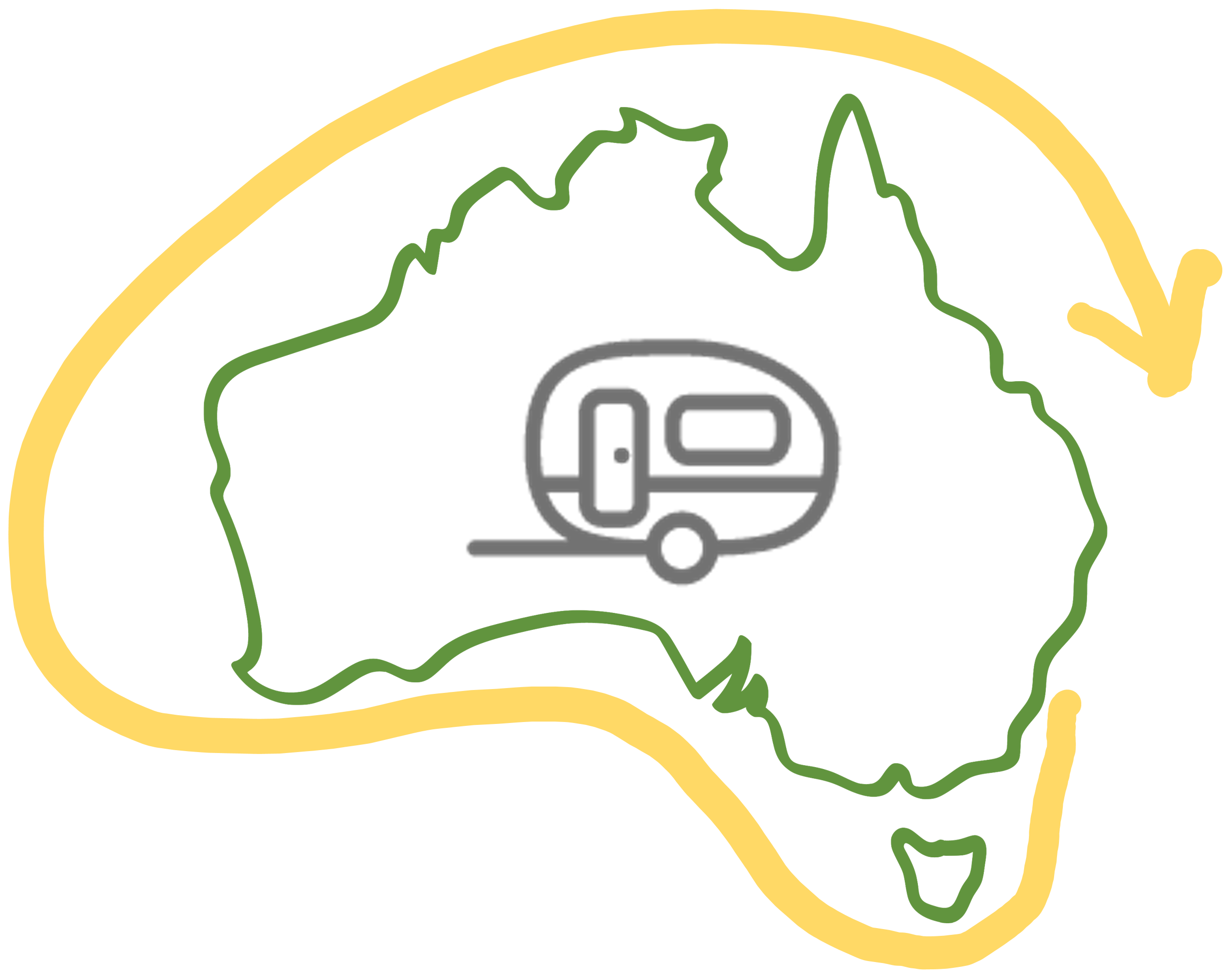




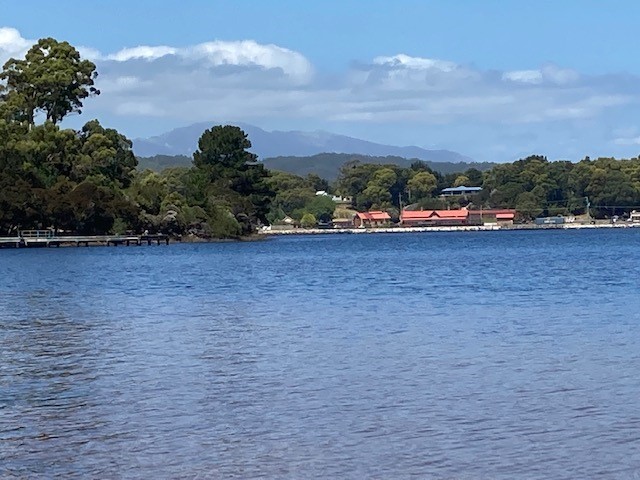


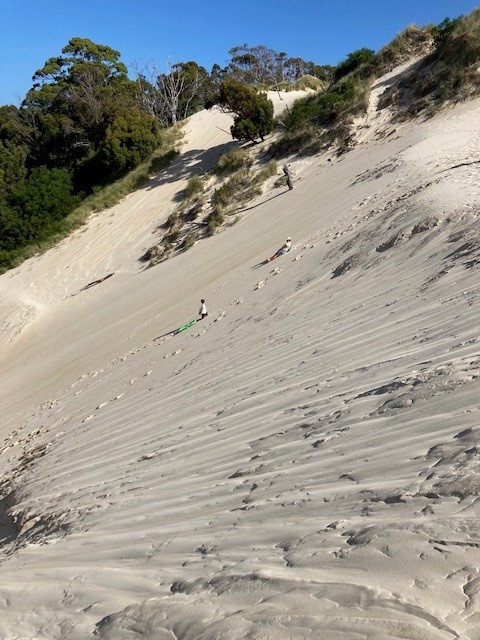


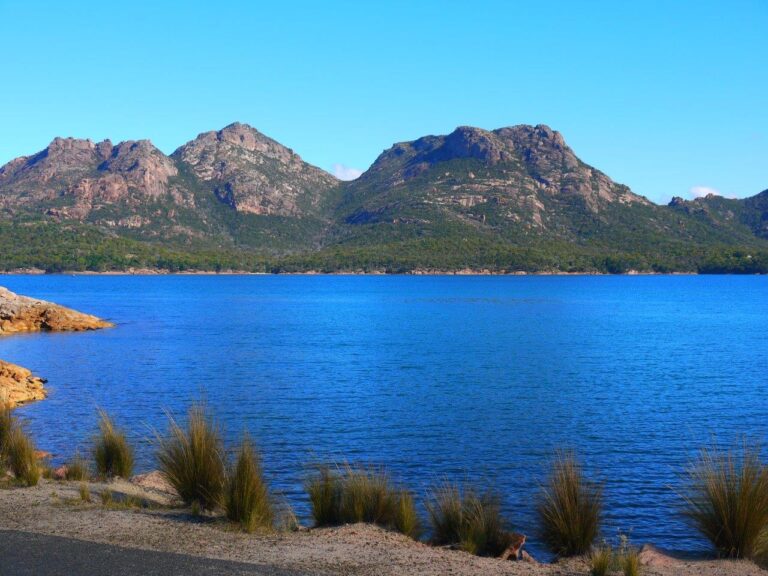

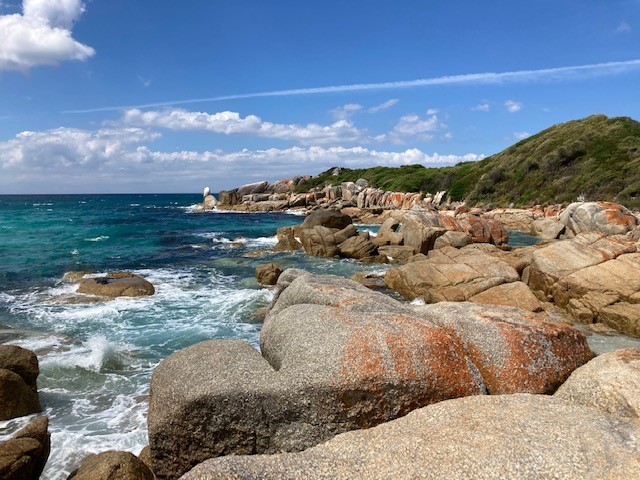


Great wrap of your adventures on the little island. We were very sad to leave Tassie too. Jenny and Stephen (Snug CP )
Hi guys you are really doing it tough!!!!!!
The ferry to Ireland leaves at 4am…..be there at 2am…
To be sure to be sure
Did you notice how bad the road kill is in Tassie, some of the worst I’ve seen.
Great pics aswell although needed a bottle of wine rather then a glass!
We now have a house sitter and carer for Dinky so plans for our trip are getting under way.
Painting is going well and we had a few days at Shoal Bay I hope to include if I can work your site…not too good with computers and stay away as much as possible.
Elton hit town last month, one of the best ever….just down the road so walked and danced all night.
Seal Rocks was stunning and water temp was 25°, not good for the reef but so enjoyable.
If you get a chance go see Tim Wintons Blue Back, great movie,
Aussie cast and music.
Must away, we have Japanese student coming to stay and need to get room ready.
when we did Europe and uk we did 25,000 klms, or was it miles. You have abit of a catch up
Safe travels it’s a wonderful country out there, enjoy x
Wow guys you are really doing it tough!!!!!
The ferry to Ireland is 4am,get there at 2am to be sure to
You blog continues to be very interesting and enjoyable! Can’t wait for more! 🐨 🦘 🇦🇺 🏕 🌊 💕🥰
Another terrific blog. All sounds fabulous.
My Grandmother, on Dads side, was born in Strahan .. roaring forties indeed!
Dad grew up on a Dairy farm/chicken hatchery in West Hobart .. view of Mount Wellington one side, Derwent River on the other .. absolutely beautiful vista!
I’m yet to explore the northeast coast .. it’s now on my list.
Happy and safe travels! xx
Inspiring you two. what a great trip .Fantastic overview and pics.
Hey Susan,
Just checked your blog and so happy that you are having a good time. You have got to post these photos on instagram, they are amazing👏
Stay safe and lots of love,
Alina